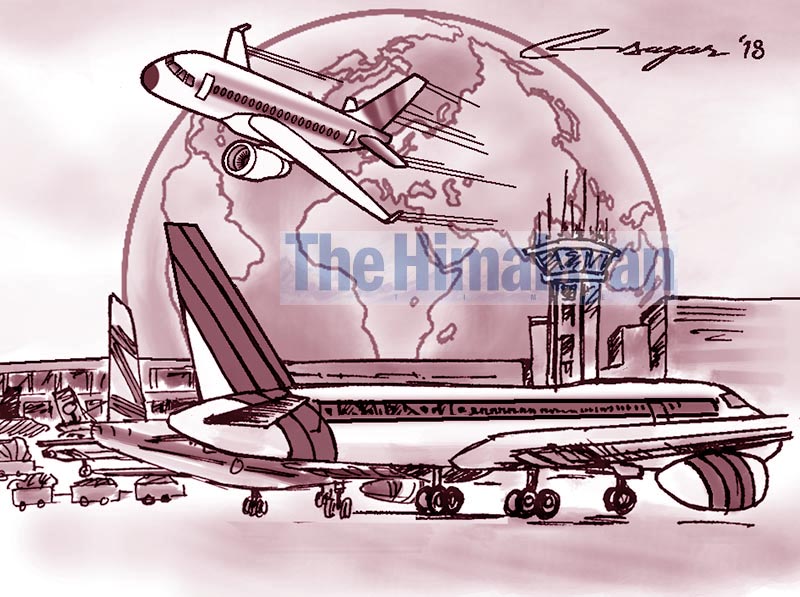Key metrics of Nepali aviation take a nosedive
Kathmandu, April 6
Over a month after the infamous Taplejung helicopter crash that claimed the lives of all the seven onboard, including, the minister of culture, tourism and civil aviation, who is in-charge of the nation's air safety, it appears that little has changed in Nepal’s civil aviation system.
The ongoing session of the parliament at the time chose not to scrutinize the incident and the existing backdrop where the sitting minister for civil aviation could willy-nilly commandeer the autonomous financial resources at the civil aviation authority of Nepal for chartering helicopters for the political gains at the drop of a hat, in the name of supervision of airports, both operating and under-construction.
The opposition party, too, chose to look the other way, as its members too had not done things differently in their times of power. This oversight, stakeholders say, is costing the country dear.
CAAN, the statutory authority on civil aviation, last presided by the late minister, has shown little signs of improvement as is evident from its recent demonstration of utter disdain for public convenience arising out of its act that resulted in the recent cancellation of Nepal Airlines Dubai flight for nearly 12 hours on account of runway closure for maintenance, an aviation expert said.
“On the one hand, the authority’s prudence, as far as the inauguration of the multi-billion runway pavement reconstruction project is concerned, went to the extent of seeking a priest’s services to ward off evil and problems, while on the other its nonchalance, as the incident demonstrated, was signified by deputing the airport’s general manager and aerodrome operations-in-charge were in Hong Kong to receive an international award for making ‘significant’ achievements, precisely at a time when the runway maintenance project kicked off,” the expert added.
The intention of allowing take-offs to the last second prior to mandatory closure, lacks application of mind as it doesn’t take into account the possibility of a departing aircraft attempting to land immediately for safety reasons including on-board fire. “Clearly, safety is the last thing on the minds of CAAN’s managers, many of them trained abroad on safety management.”
Interestingly, the composition of the investigation committee raised for probing the incident has raised eyebrows in the aviation circles as it includes sitting officials of the airline and the aerodrome operator, CAAN, the two parties involved in the incident.
Besides, the incident serves as a test case for the implementation of the provisions of the Montreal Convention, which was ratified in the aftermath of the US-Bangla crash and since being touted by the MoCTCA as a landmark achievement, for providing compensation to the affected NAC passengers, even though most of the passengers are unlikely to seek legal recourse, another expert commented.
One key reason for the recent sudden plunge in the key metrics of Nepali aviation, is uncertainty surrounding the position of the director general of the authority owing to the imminent superannuation of the incumbent director general who completes his tenure in a couple of months, a senior CAAN official claimed.
“The lack of practice of announcing the next chief of the organization well in advance is causing a pernicious environment of uncertainty arising out of a breakdown of discipline and pervasive insubordination as there are half a dozen qualified aspirants, all well connected to who-is-who of Nepali politics, for the lucrative position, five from within CAAN, who are locking horns,” the official shared.






